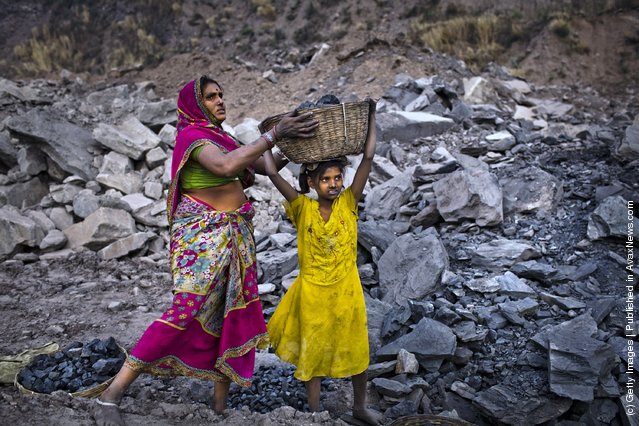COAL LABOURERS’ UNION: A GLANCE AT AWAG’S PAST INTERVENTIONS
AWAG’s objective has always been to take women’s issues beyond the individual level. With this in mind in 1993, AWAG initiated work with the coal labourers. The idea was to organise them into a union through which they could demand appropriate wages and basic facilities at their work place. The next plan was to work on issues concerning their education, health and nutrition so as to improve their standard of living and thereafter to put in efforts to reinstate them at their native hometown.
The first union of these members was setup in 1984 at the Asarwa transhipment point and the second one was in 1985 at Sabarmati. AWAG was well-versed with the concept of social security and understood that by doing so the labourers across all the transhipment points at the State level and National level would stand to gain.
AWAG embarked upon the issue at two levels. One was at the work area of the coal labourers and the other was a policy-based intervention by filing a Public Interest Litigation. Under ‘The Gujarat Unorganised Insecure Labourers (Welfare and Regulation) Act’ , the court passed an order to lay down schemes for the labourers. In June 1988, the government published the said scheme. The court instructed the government to setup a Board to implement the orders passed. This was AWAG’s first success.
The Board was finally setup by the government in September 1990. In addition to transporting coal, the transhipment points also undertook the transport of other products and goods. A fair count of labourers was involved in this work. AWAG started making these labourers aware about the prevailing exploitation between them and the contractors. This move led to a number of positive outcomes. The wages of each group comprising of six labourers that was earlier Rupees 90 gradually increased to Rupees 330. Likewise, the wage rate increased from Rupees 10 to Rupees 100 and the wage rate for loading a truck increased from Rupees 1.40 per ton to Rupees 10 per ton. In 1998 the railway authorities accepted the union and made services such as toilets, shed and crèche available to the labourers. With this, oppressive activities at the work place were put an end to.
A total of four hundred and fifty-two women and two hundred and sixty-three men were active members of the coal labourers’ union. Around one hundred and thirteen women were successful in procuring land under the Urban Land Ceiling Act.
Similarly, the government constructed low-cost toilets for one hundred and eleven women labourers in their homes in Panchmahal district. In short, the union was active. As an effect of AWAG’s intervention and pressure, the government had appointed a committee to provide social security to the labourers. The union was successful in obtaining their rights and benefits from the contractor lobby.
However, the coal labourers union had to be wound up midway. Work on the Central Government’s decision to convert meter-gauge railway lines to broad-gauge was commenced upon. Subsequently, the transhipment activity at the Sabarmati railway yard was discontinued. The contractor provided the labourers with half a month’s wages and discharged them from their duties. These labourers faced a great loss. They started moving into other areas in search of alternative employment. This directly affected the union’s functioning. The labourers became disillusioned and the union gradually closed down. This posed a major problem before AWAG.
A policy-based decision related to the livelihood of the coal labourers was discarded at a single stroke! AWAG’s work with the coal labourers was in a precarious situation. Efforts were put in to explore alternative sources of livelihood. AWAG felt that the labourers had attained a reasonable level of awareness by now. The organisation was convinced that they would be competent enough to ascertain their rights.

